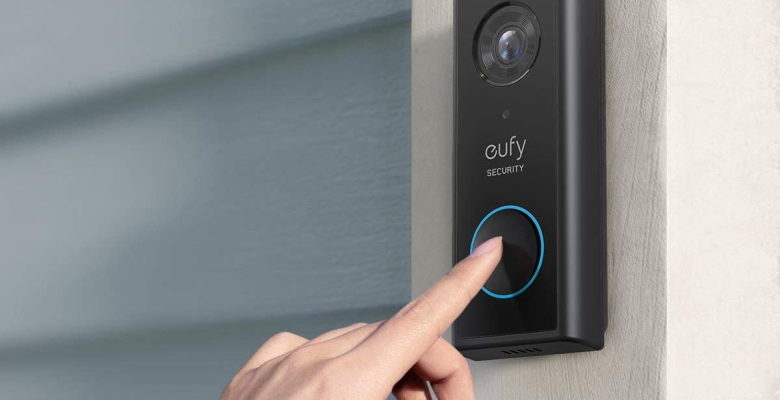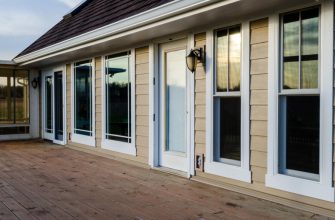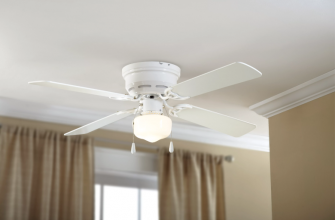Choosing the right doorbell for your home is an important decision that requires some research and consideration. The doorbell is often the first impression guests have of your home, so you’ll want to pick one that is both functional and aesthetically pleasing. This comprehensive guide covers everything you need to know about finding the perfect doorbell for your needs.
We’ll start by discussing why an effective doorbell matters for home security and convenience. Next, we’ll outline the main types of doorbells on the market—wired, wireless, and smart—including how each option works and key factors like installation, advantages, and disadvantages. Once you understand the basics, we’ll go over the top criteria to factor into your decision based on your home setup, desired features, power options, and smart integration capabilities.
Later sections will provide step-by-step installation instructions, troubleshooting tips for common issues, additional features to consider like video and motion detection, and maintenance best practices to keep your doorbell working properly. By the end, you’ll be well-equipped to select and install the ideal doorbell for welcoming visitors and keeping your home safe.
- The Importance of a Doorbell in Home Security and Convenience
- Understanding Different Types of Doorbells
- Wired Doorbells
- Installation Process
- Advantages and Disadvantages
- Wireless Doorbells
- Installation Process
- Advantages and Disadvantages
- Smart Doorbells
- Installation Process
- Advantages and Disadvantages
- Factors to Consider When Choosing a Doorbell
- Compatibility with Your Home
- Audio and Visual Features
- Power Source Options
- Integration with Smart Home Systems
- Installing Your Chosen Doorbell
- Preparing Your Entryway
- Step-by-Step Installation Guide
- Troubleshooting Common Installation Issues
- Additional Features and Accessories
- Camera and Video Capabilities
- Two-Way Audio Communication
- Motion Detection and Alerts
- Cloud Storage Options
- Maintaining and Troubleshooting Your Doorbell
- Cleaning and Maintenance Tips
- Common Issues and Solutions
- When to Seek Professional Help
- Final Thoughts on Choosing the Right Doorbell for Your Home
The Importance of a Doorbell in Home Security and Convenience
Your doorbell plays a crucial role when it comes to home security and knowing when someone is at your door. A functioning doorbell alerts you to visitors so you don’t miss important deliveries or surprise guests. It also deters potential intruders by signaling that someone is home.
In terms of convenience, a doorbell allows you to communicate with visitors without having to constantly monitor your door. You can find out who is there from anywhere in your home. Smart doorbells equipped with video streaming and two-way audio make this even easier.
Doorbells also provide independence for those with limited mobility. Rather than struggling to answer the door, homeowners can conveniently see and speak with guests. Additionally, doorbell cameras capture video evidence if security ever becomes a concern.
Given how essential doorbells are for most households, investing in the right model tailored to your needs brings significant lifestyle benefits. As we’ll explore next, you have several options when it comes to choosing a doorbell with the necessary features for your home.
Understanding Different Types of Doorbells
Wired Doorbells
Installation Process
Installing a wired doorbell requires basic electrical work but is a straightforward process:
- Turn off power at the main circuit breaker.
- Run low-voltage wires from the internal doorbell transformer near the circuit breaker to the exterior button location, feeding the wires through holes drilled in the wall.
- Connect the wires from the button assembly to the transformer wires using wire nuts.
- Secure the button assembly outside using included screws.
- Turn power back on and test that the doorbell button triggers the interior chime.
Wired doorbells use your home’s existing electrical wiring, so professional installation is not necessary. However, basic electrical knowledge and proper safety precautions are a must.
Advantages and Disadvantages
Advantages:
- Reliable performance since power comes directly from your home rather than batteries.
- Louder chime than battery-powered models.
- Professional appearance for a sophisticated look.
Disadvantages:
- More complex installation than wireless options.
- Less flexibility since wired into your existing doorbell system.
- Higher upfront cost for equipment and installation.
Wireless Doorbells
Installation Process
Installing a wireless doorbell requires only a few simple steps:
- Mount the wireless button outside using screws or adhesive.
- Plug the wireless receiver into an interior electrical outlet.
- Sync the button with the receiver using the pairing button on each component.
- Test that pressing the button triggers the chime.
With no wires to run, wireless doorbells can be installed in minutes without any tools. You have complete flexibility on placement too.
Advantages and Disadvantages
Advantages:
- Extremely easy “do-it-yourself” installation.
- Flexible placement for both interior and exterior components.
- Inexpensive price point.
Disadvantages:
- Shorter range and connectivity issues possible.
- Batteries must be replaced occasionally.
- Sound quality and volume not as robust.
Smart Doorbells
Installation Process
Installing smart doorbells follows a similar process to standard wireless models:
- Turn off power before beginning any electrical work.
- Remove your existing doorbell and disconnect wires (optional).
- Mount the smart doorbell bracket using included screws.
- Connect to WiFi and sync with your smart home app.
- Connect any remaining wires to integrate with an existing chime (optional).
For standalone operation without an existing chime, the WiFi connection is all that’s required. But integration with your home’s wiring provides the benefit of an interior chime.
Advantages and Disadvantages
Advantages:
- Advanced features like HD video streaming and motion alerts.
- Seamless connectivity with other smart devices.
- Customizable chime tones.
Disadvantages:
- Higher upfront investment.
- Ongoing subscription fees for cloud storage in some cases.
- Increased complexity to install and setup.
Factors to Consider When Choosing a Doorbell
Compatibility with Your Home
When selecting a doorbell, you’ll want to ensure it fits your home’s setup. Assess whether pursuing a wireless or wired approach makes the most sense based on your existing doorbell system and comfort with basic electrical work. Smart doorbell compatibility depends on sufficient WiFi coverage at your entryway
If you have an older home without an existing low-voltage doorbell system, wireless options provide an easy upgrade. Modern homes tend to have the infrastructure in place to support wired doorbells. You’ll also want to choose a doorbell style that aligns with your home’s exterior design from modern to classic.
Audio and Visual Features
The audio and visual features on your doorbell determine how you interact with visitors. Consider sound quality and volume for the chime, night vision capabilities, video resolution and aspect ratio, two-way talk functionality, and other smart integrations with lighting or security systems.
Assess your needs and which innovations matter most, while balancing factors like cost and complexity. The right combination of audio and visual features tailored to your lifestyle provides convenience and peace of mind.
Power Source Options
Doorbell power sources fall into three main categories:
- Hardwired: Connects directly to your home’s low-voltage wiring to draw power from the doorbell transformer.
- Battery-powered: Uses replaceable batteries designed to last 1-2 years under normal usage.
- Plug-in: Integrated power plug that connects to a nearby outdoor electrical outlet.
Consider accessibility to existing wiring or outlets and your ability to perform electrical work. Hardwired models provide the most reliable and consistent performance. Battery or plug-in options trade off convenience for potentially shorter lifespans.
Integration with Smart Home Systems
Many modern doorbells integrate with popular smart home platforms like Amazon Alexa, Google Assistant, Apple HomeKit, Samsung SmartThings, and more. If you already own compatible smart devices, prioritize choosing a video doorbell that works within your established ecosystem.
Smart integration allows you to access doorbell notifications and footage using voice commands. You can also set up automations where the doorbell triggers lights, cameras, or thermostats when motion is detected for added convenience and security.
Installing Your Chosen Doorbell
Preparing Your Entryway
Proper planning and preparation ensures smooth doorbell installation:
- Survey your entryway and determine the ideal placement based on sightlines, wiring access, weather protection, etc.
- Have all necessary tools available including a drill, screwdriver, wire strippers, and stud finder.
- For wired models, shut off power at the main circuit breaker panel before beginning.
- Follow all safety precautions when dealing with electrical wiring.
Take measurements and check that the chosen location has adequate space for the doorbell unit or button. Remove any existing doorbells if replacing your current model.
Step-by-Step Installation Guide
Installation steps can vary slightly depending on your doorbell model but generally follow this process:
- Mount the base plate: For wired doorbells, feed wires through the center hole first. Use included screws to affix the plate level against the wall.
- Connect wires: Align wires with matching colors and secure connections with wire nuts.
- Attach the doorbell: For screw-in models, turn screws on the sides to lock into the base plate. For adhesive models, remove the sticker backing and press firmly against the plate.
- Complete software setup: For smart WiFi models, connect to the network and sync devices through the companion app.
- Test functionality: Restore power if wired. Trigger the doorbell button and chime several times to confirm proper operation.
Refer to the installation manual for your specific doorbell to ensure proper setup. The process takes less than an hour with basic DIY skills and tools.
Troubleshooting Common Installation Issues
Some common doorbell installation problems and solutions include:
- No power: Check connections to wiring, inspect wires for damage, or replace batteries.
- Doorbell button not triggering: Ensure device is correctly synced and within wireless range. The button assembly may also need reseating or remounting.
- Faint chime or no sound: Try adjusting chime volume if adjustable. Otherwise, wiring issues are likely the cause.
- Chime goes off without button press: Faulty button contacts may be stuck closed, triggering the chime. Replace button assembly.
- Video but no sound from smart doorbell: Check app notifications settings, speaker damage, or WiFi connection strength.
Carefully inspect all connections and components when troubleshooting. Reset devices to factory defaults and re-pair if simple fixes don’t resolve the issues. Professional assistance may be needed for wiring problems.
Additional Features and Accessories
Camera and Video Capabilities
One of the main advantages of smart doorbells is high-quality video streaming. Features to look for include:
- HD video and night vision for clear footage any time of day.
- Adjustable motion zones to capture only relevant activity and avoid false alerts.
- Person, vehicle, animal, and package detection uses AI to classify objects and prioritize notifications.
- Video analytics gather usage statistics and highlight important clips.
Many smart doorbells integrate with other security cameras for whole-home coverage. You’ll also want sufficient WiFi bandwidth and router capacity to support streaming.
Two-Way Audio Communication
Two-way talk allows real-time conversation between you and visitors. This prevents missed deliveries and lets you remotely screen guests.
Look for doorbells with noise-cancelling microphones for clear audio even in loud environments. Speakers should produce sufficient volume for natural back-and-forth dialogue.
Motion Detection and Alerts
Doorbell cameras send alerts to your smartphone and trigger recordings whenever motion is detected. Configurable sensitivity settings prevent false alerts from passing cars or tree branches.
Notifications give you peace of mind knowing exactly what’s happening at your entryway while you’re away. Timely alerts also deter potential intruders and porch pirates.
Cloud Storage Options
For access to historical doorbell footage, smart doorbells offer cloud storage subscriptions. Plans range from 24 hours of video history to 30+ days.
If local storage is preferred, some doorbell models support SD cards or integrate with networked video recorders. Weigh costs, convenience, and your footage access needs when choosing storage.
Maintaining and Troubleshooting Your Doorbell
Cleaning and Maintenance Tips
Regular doorbell maintenance goes a long way toward longevity and performance:
- Wipe down the button and housing exterior with a soft, damp cloth to remove dirt and grime.
- Check wires and connections to ensure insulation isn’t cracked or connections loose.
- Test the doorbell every couple months to confirm responsiveness and sound quality.
- Replace batteries every 1-2 years for wireless models.
Avoid using harsh cleaners or chemicals which could damage doorbell components and finishes. Periodic inspections catch minor issues before they become bigger problems.
Common Issues and Solutions
If your doorbell acts up, try these troubleshooting tips:
- No power/dead batteries: For battery-powered models, install fresh batteries according to specifications. Check connections on wired doorbells.
- Intermittent functionality: Weak batteries, loose wiring, extreme weather, or out-of-range placement could be potential culprits.
- Faded button illumination: Replace light bulb or LED in the button assembly.
- No wireless connectivity: Resync the doorbell if it loses connection with the chime and router. Also inspect for antenna damage.
If issues persist after trying the above solutions, contact customer support. Provide the make and model details along with a description of symptoms to help diagnose problems.
When to Seek Professional Help
While DIY troubleshooting can resolve many basic doorbell issues, it’s best to call a professional for the following:
- Complex wiring problems where power isn’t making it to the doorbell.
- Installation help when first switching to a wired doorbell.
- Technical issues with video, WiFi connectivity, or integrations.
- Repeated or worsening problems where simple fixes haven’t worked.
Seeking assistance saves you time and ensures proper repairs that won’t negatively impact other systems. Professionals also have specialized tools and testing equipment.
Final Thoughts on Choosing the Right Doorbell for Your Home
Finding the perfect doorbell involves balancing functionality, features, aesthetics, installation methods, and cost. Carefully weigh wired, wireless, and smart options—each technology suits different needs. Understanding your home infrastructure and lifestyle priorities drives the decision process.
Once installed, keep your doorbell working optimally with regular maintenance and prompt troubleshooting when issues emerge. A high-quality doorbell tailored for your requirements pays dividends for home security, convenience and peace of mind.









